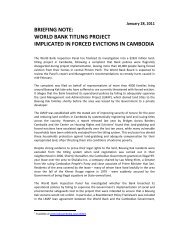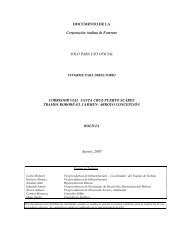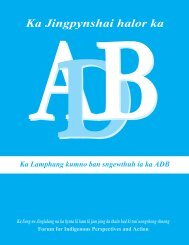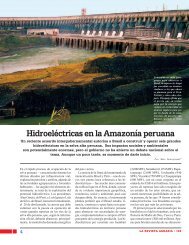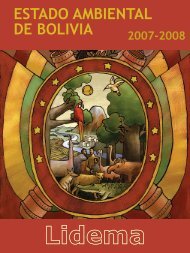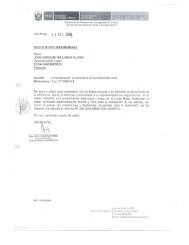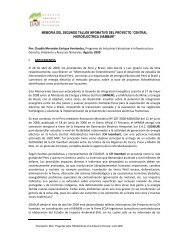The Real Cost of Power - Bank Information Center
The Real Cost of Power - Bank Information Center
The Real Cost of Power - Bank Information Center
You also want an ePaper? Increase the reach of your titles
YUMPU automatically turns print PDFs into web optimized ePapers that Google loves.
team found this to be true when it visited Tragdi bunder.<br />
What was once a shorter route has now become lengthier by<br />
nearly 4 kms, and the fisher-folk are forced to shell out Rs. 450 for each trip by an auto-rickshaw, in place <strong>of</strong> the earlier<br />
Rs. 150 per trip. <strong>The</strong> route is also not maintained well and the women folk <strong>of</strong>ten are delayed when returning from the<br />
markets after selling the fish. This has further implications.<br />
“<strong>The</strong> roads are closed in turn increasing our travel distance, the outlet pipes have<br />
led to reduction <strong>of</strong> fish catch and the water supply in our villages. Thanks to these<br />
companies we now have to take a long walk to fetch water even for our daily<br />
activities.”<br />
Aminaben<br />
An even more serious problem faces the animal grazers and their animals. Even the fact-finding team members, when<br />
going to these bunders and settlements, were repeatedly stopped by the Tata Mundra security personnel, at three<br />
security gates. Each time we had to explain why we wanted to go to the coast/fishing settlements, at times forced to<br />
display our urban credentials.<br />
<strong>The</strong> local fisher-folk and fish-traders were also repeatedly stopped and questioned. <strong>The</strong> whole area is home to not only<br />
hundreds <strong>of</strong> pastoral families, but thousands <strong>of</strong> animals they nurture as means <strong>of</strong> their livelihood. <strong>The</strong> Tata/CGPL<br />
management informed the fact-finding team that the company has opened a cattle-fodder centre/'gaushala' and the<br />
number <strong>of</strong> cattle in it has increased. <strong>The</strong> locals explain this increase: denied access to their grazing lands, more <strong>of</strong> the<br />
pastoralists have been forced to go there. However, the proportion <strong>of</strong> animals that go there is still small compared to the<br />
total number <strong>of</strong> animals, the rest forced into smaller and smaller areas. <strong>The</strong> number <strong>of</strong> camels, which ran into many<br />
hundreds some years ago, has fallen to virtually nothing after the Adani and Tata projects came up, according to local<br />
herders. But the Tatas deny the existence <strong>of</strong> animals, like camels, altogether.<br />
Table 3. Impact on Livelihoods - Animal Husbandry<br />
Village Cattle Reqd Gauchar Land<br />
(Ha)<br />
Total Gauchar Land<br />
(Ha)<br />
Gauchar Land<br />
Allotted to SEZ (Ha)<br />
Gauchar Land<br />
Remaining (Ha)<br />
Shortage in Reqd<br />
Gauchar Land %<br />
Navinal 1753 280 137 94 43 85%<br />
Tunda 1189 190.24 158 86 72 62%<br />
Luni 833 133.24 81 81 0 100%<br />
Siracha 3170 507.2 390 41 349 31%<br />
Baroi 276 44.16 141 31 110<br />
Goersama 957 153.12 86 29 57 63%<br />
Zarapara 5509 881.44 1000 408 592 33%<br />
Mundra 273 43.68 NA 496 NA –



